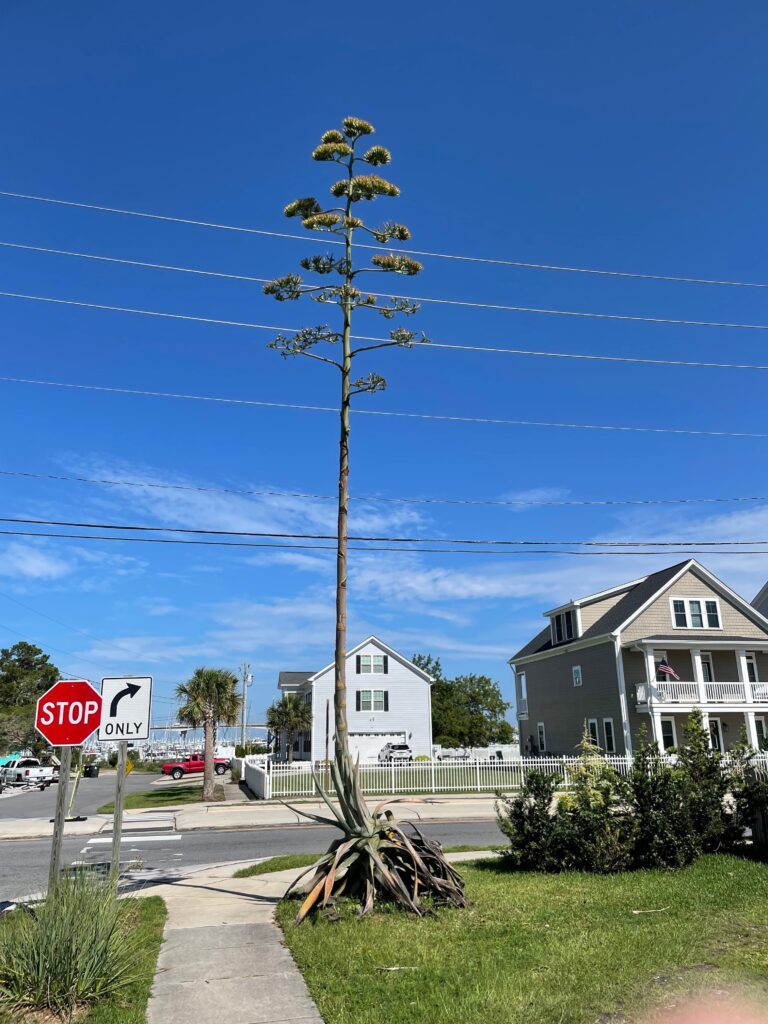American Century Plant in Bloom
go.ncsu.edu/readext?878737
en Español / em Português
El inglés es el idioma de control de esta página. En la medida en que haya algún conflicto entre la traducción al inglés y la traducción, el inglés prevalece.
Al hacer clic en el enlace de traducción se activa un servicio de traducción gratuito para convertir la página al español. Al igual que con cualquier traducción por Internet, la conversión no es sensible al contexto y puede que no traduzca el texto en su significado original. NC State Extension no garantiza la exactitud del texto traducido. Por favor, tenga en cuenta que algunas aplicaciones y/o servicios pueden no funcionar como se espera cuando se traducen.
Português
Inglês é o idioma de controle desta página. Na medida que haja algum conflito entre o texto original em Inglês e a tradução, o Inglês prevalece.
Ao clicar no link de tradução, um serviço gratuito de tradução será ativado para converter a página para o Português. Como em qualquer tradução pela internet, a conversão não é sensivel ao contexto e pode não ocorrer a tradução para o significado orginal. O serviço de Extensão da Carolina do Norte (NC State Extension) não garante a exatidão do texto traduzido. Por favor, observe que algumas funções ou serviços podem não funcionar como esperado após a tradução.
English
English is the controlling language of this page. To the extent there is any conflict between the English text and the translation, English controls.
Clicking on the translation link activates a free translation service to convert the page to Spanish. As with any Internet translation, the conversion is not context-sensitive and may not translate the text to its original meaning. NC State Extension does not guarantee the accuracy of the translated text. Please note that some applications and/or services may not function as expected when translated.
Collapse ▲I was leaving Beaufort after a meeting when I saw this giant flower stalk. I had noticed the huge at least five-foot-wide plant a couple of times over the last several years as I entered or left Beaufort on my way to meetings. It was hard for me to believe the plant was actually flowering or in the case of this photo, it was completing its flowering process. If you look at the base of the flower stalk, you will notice that the, once beautiful, gray-green foliage is now withering away and dying.
It’s called an American Century Plant Agave americana because it takes such a long time (30 or more years sometimes) to acquire enough energy to produce the flowering stalk that can reach up to 40 feet in height. This native to the desert southwest will grow here in our zone 8 climate, but it’s still rare to see one in bloom. After the bloom the mother plant withers and dies, as its life’s mission is complete.

American Century Plant, Beaufort, NC/Image: Shawn Banks
I didn’t look super close as I was getting the picture, but often times little plants, called pups, will sprout around the base of the plant. These pups can be removed and planted elsewhere or they can be left to grow where they are. It will take another several years for them to develop into large enough plants to send up their own flower stalk.
The process of flowering can be helped along with water and fertilizer during the summer. However, because they are native to the desert southwest, they are well adapted to storing water for times of drought. They also accumulate nutrients when they can. The extra fertilizer and water that our area has naturally speeds up the process of reaching maturity.
If you have been accessing Beaufort on Turner Street over the last several weeks, I hope you’ve taken the time to notice this beautiful oddity. It may not happen again for several years.




